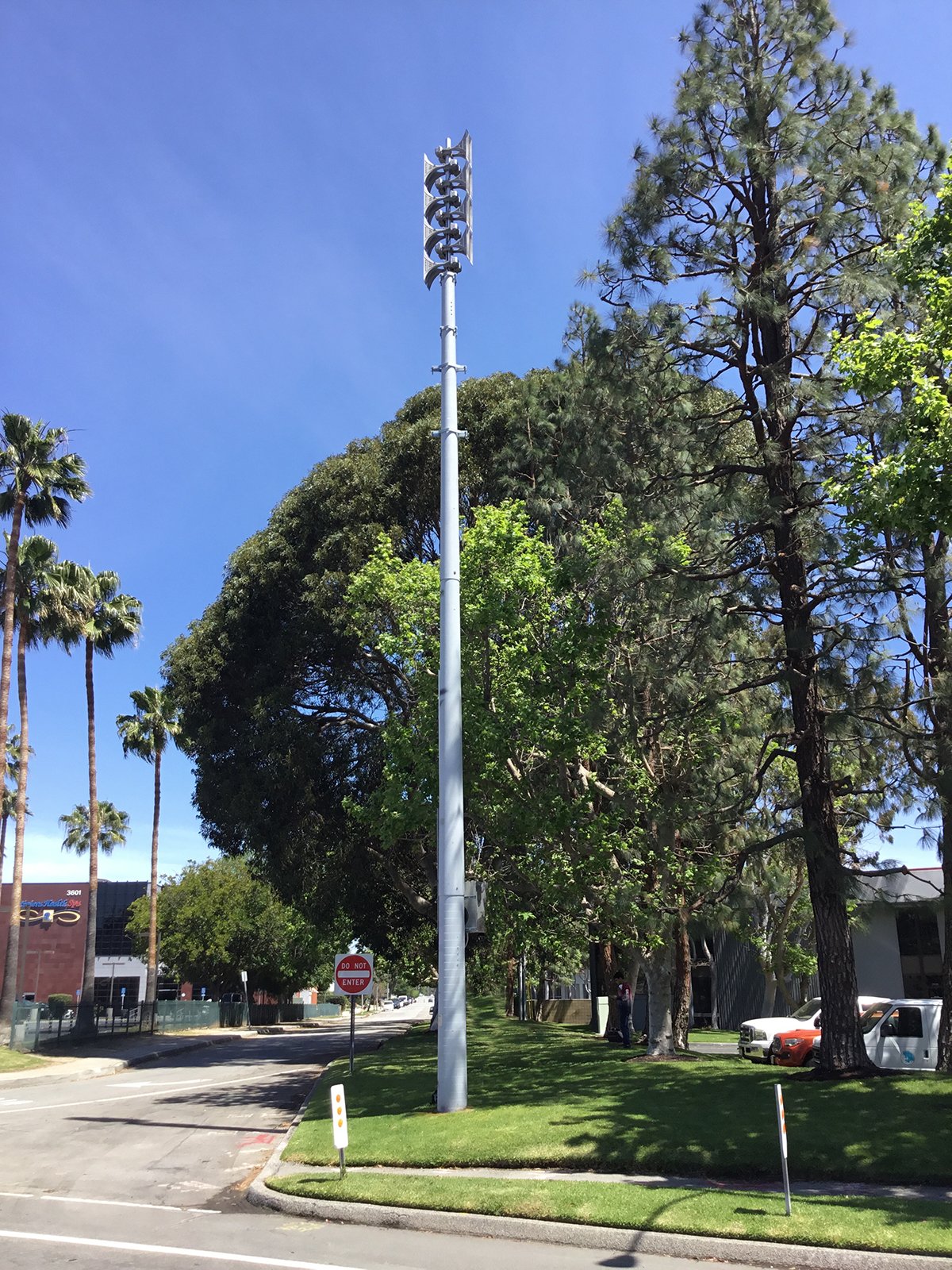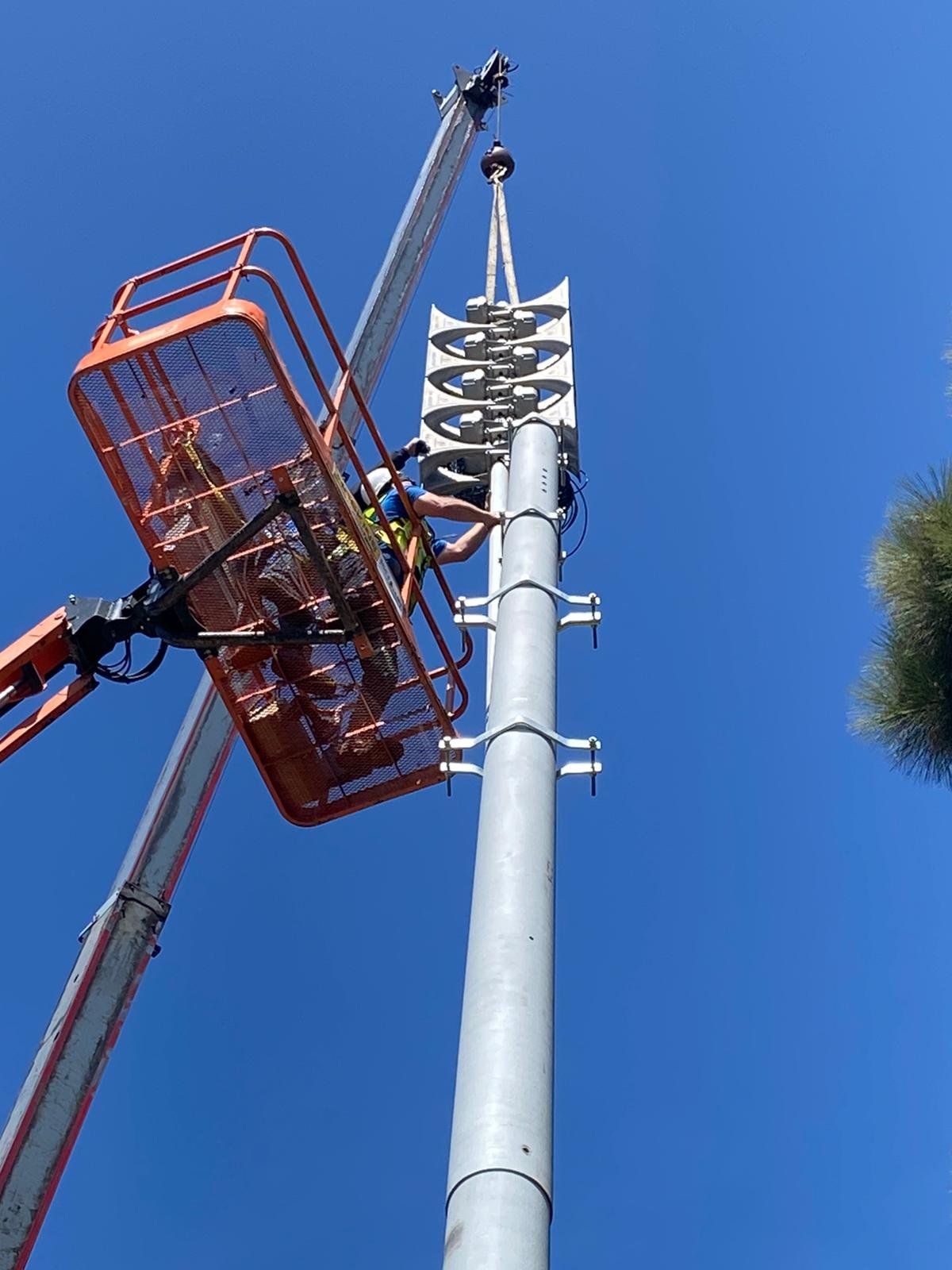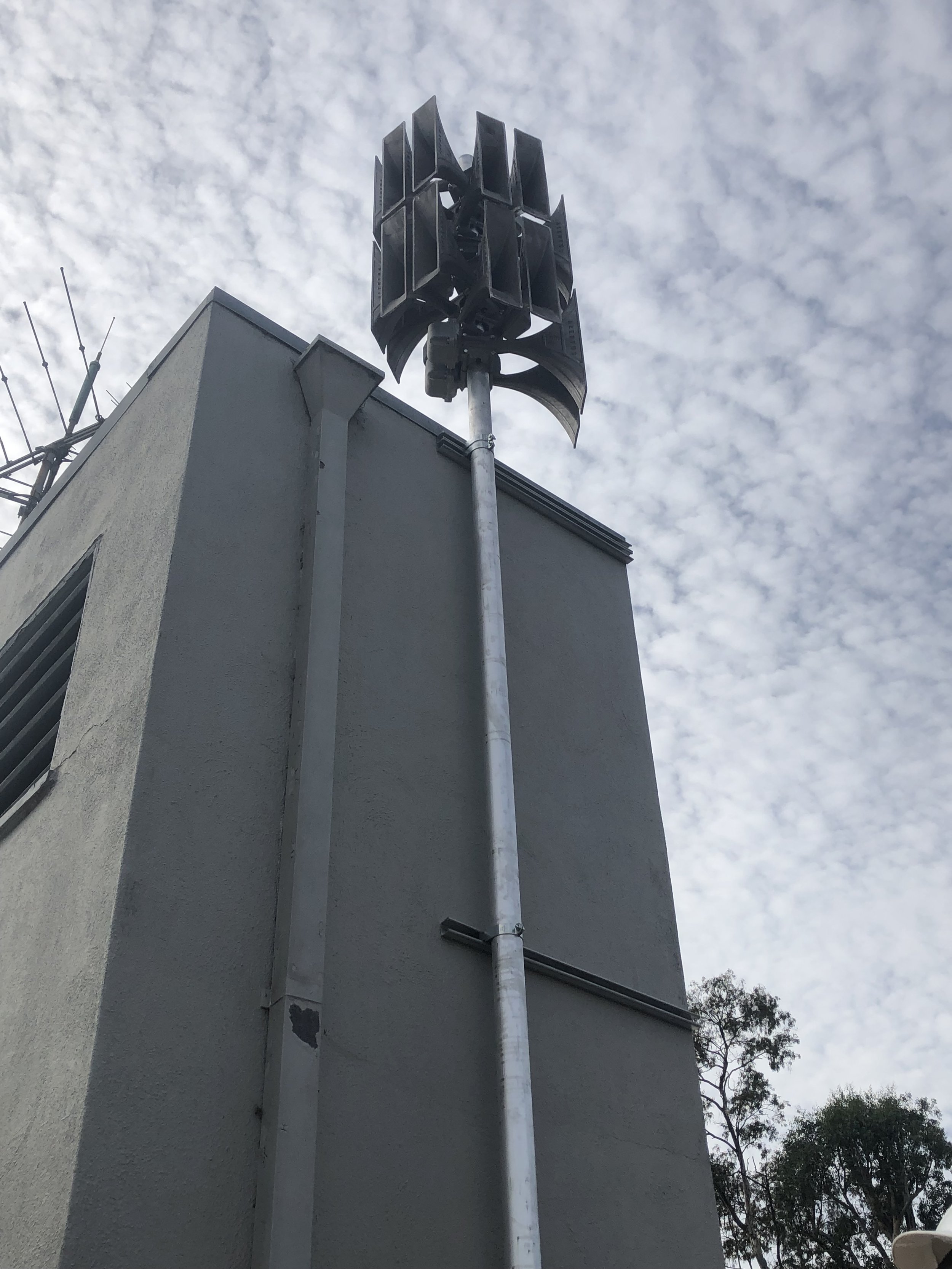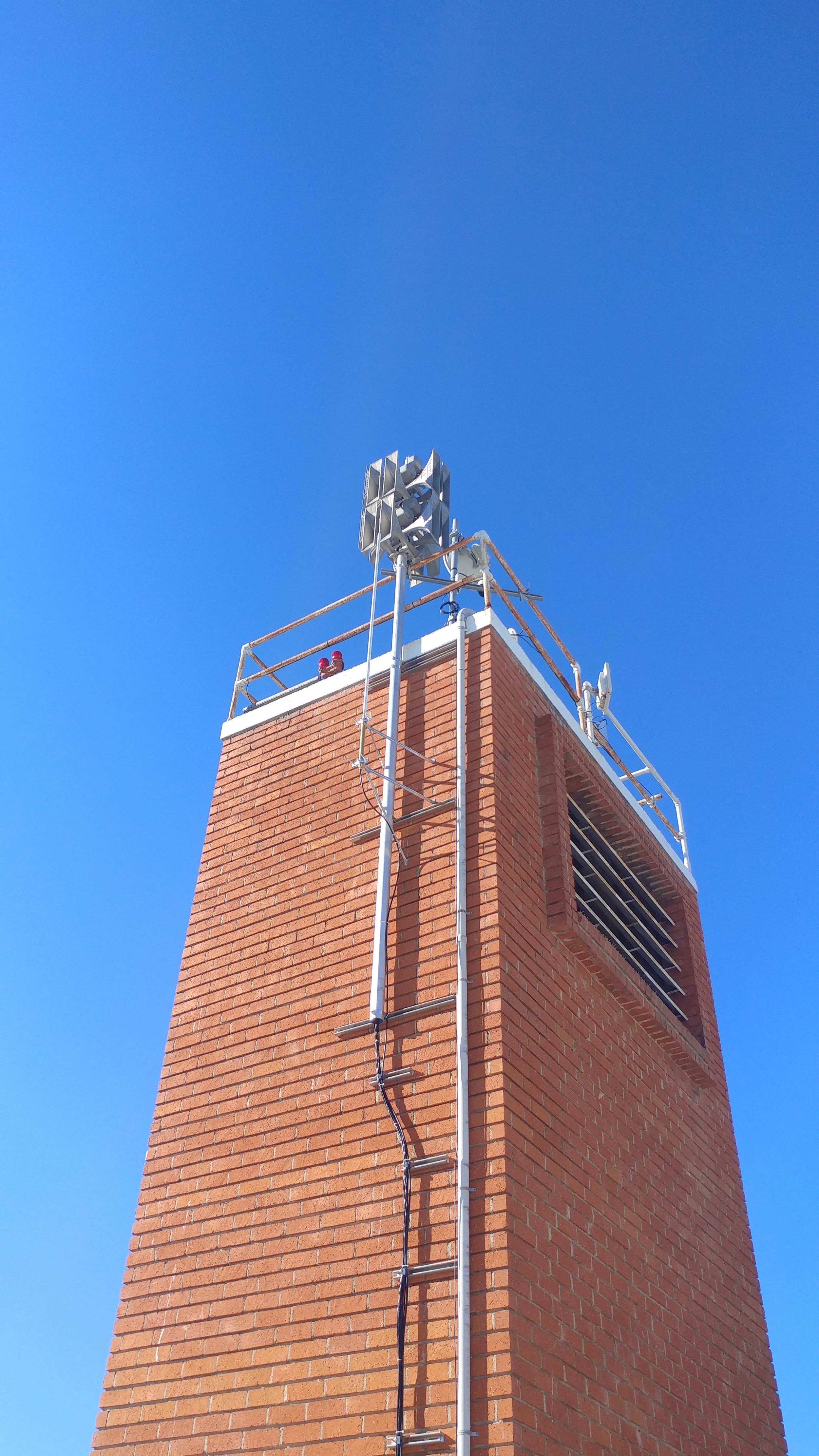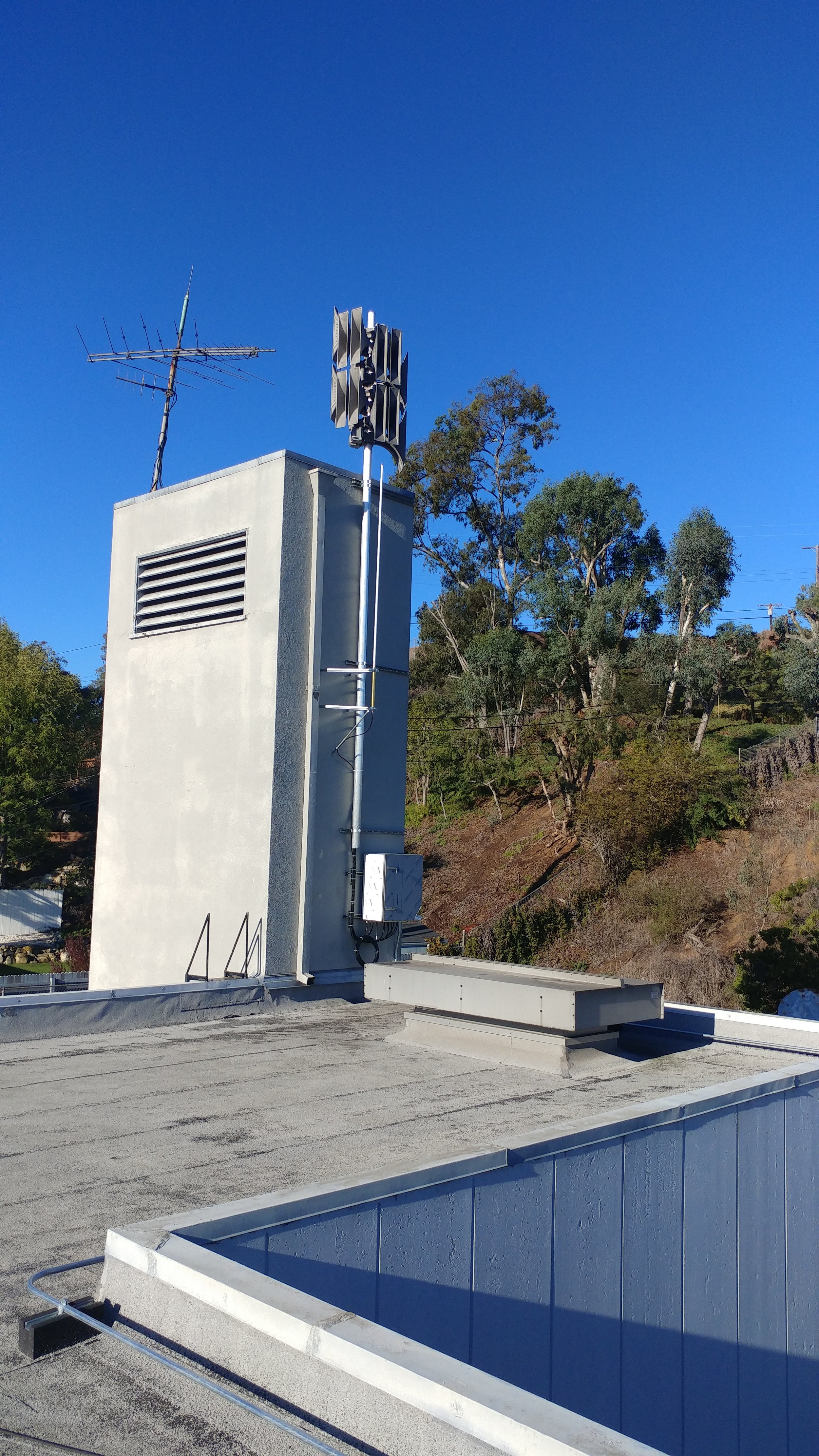Alertus / Tsunami Solutions
Mass Notification for Tsunamis
Enhance Notification Reach And Effectiveness With Audible Notification
Tsunamis are often triggered by undersea earthquake activity and can cause hazardous flooding, strong currents, and floating debris that result in loss of life.
To address these environmental disasters, Alertus Technologies’ tsunami warning alarm system is designed to alert individuals living in coastal areas about impending tsunamis.
Clear Intelligible Voice Messages
Alertus’ High Power Speaker Array (HPSA) instantly sends out clear outdoor voice messages using audible siren tones, pre-recorded messages, live voice, and industry-leading Text-to-Speech (TTS) technology. The speakers are designed to withstand harsh environments with a lightweight and durable design.
Alertus HPSAs are powerful and distinctive, designed to emit clear tones and intelligible voice messages in any language over long distances. The HPSAs can be managed and activated remotely from the Alertus User Interface. They are strategically placed in coastal areas as part of a broader tsunami warning system that includes seismographic and tidal sensors, as well as communication networks.
When a potential tsunami is detected, authorities responsible for monitoring and issuing warnings can quickly and automatically activate sirens to alert those in affected areas to take immediate action.
Tsunami warning sirens provide a clear and unmistakable signal to evacuate low-lying coastal areas and seek higher ground or designated evacuation zones. They are an essential component of tsunami preparedness and response efforts, as they help save lives and mitigate the impacts of disaster.
During the consultation, we will discuss your current situation to determine how Alertus can suit your needs.
audible Notification with Alertus’ high power speaker array
HPSAs are lightweight and can expand from 300 to 4200 watts. The speakers can be mounted on large poles, existing light poles using chain mounts, or on top of or on the side of a building. Our team of experts will work with you to determine the optimal placing, wattage, and speaker configuration to meet your alerting requirements.
HPSA SPECIFICATIONS
Features
| Amplification | High Fidelity Class D 300W amplifiers |
| Operating Environment | Indoor or outdoor |
| Frequency Response | 200 - 5000 Hz |
| Operating Temperature | -40°C to 85°C |
| Wattage | 150W - 3000W+ |
| Weight | 19.8lb/speaker |
| Material | Aluminum alloy |
Durable: Survives extreme weather conditions
Secure wireless or IP communication: Encrypted AES256 radios communication
Purposeful design: Use of Industry best practices and conformity to international MNS standards
Easy-to-use: Quickly activate or automate activation with sensors
Cost-Effective: Designed to be lightweight for ease of installation and reduced cost
Reliable: Extensive quality control to ensure functionality
Unified: Messaging is sent across multiple layers
Siren & sensor integration
To integrate with tsunami warning sirens, several types of sensors* are used to detect and monitor the relevant environmental conditions. These sensors work together to provide accurate and timely information about potential tsunamis.
The sensors connect to Alertus software hosted within the regional government's private VLAN or a secure cloud-hosted solution. Alertus offers integration capability with key sensors using the Common Alerting Protocol, relay interfaces, or custom integrations using our remote terminal unit.
Seismic Sensors
Seismic sensors, such as seismometers, detect and measure the seismic waves generated by undersea earthquakes. These sensors are crucial for identifying the initial earthquake that may trigger a tsunami. Seismic data helps determine the magnitude and location of the earthquake, which in turn provides information about the potential for a tsunami.
Tidal Sensors
Tidal sensors, also known as tide gauges or sea-level sensors, monitor sea-level changes. They measure the height of the water's surface and can detect abnormal fluctuations that may indicate the presence of a tsunami. Tidal sensors are typically deployed along coastlines and provide continuous data on sea-level variations.
Buoy Sensors
Buoy sensors are deployed in the open ocean and consist of pressure sensors and accelerometers. These sensors can detect changes in water pressure and vertical movement, which can be indicative of a passing tsunami wave. Buoy sensors are part of a larger network of buoys known as the Deep-ocean Assessment and Reporting of Tsunamis (DART) system, which helps provide real-time data for tsunami detection.
Seafloor Pressure Sensors
Seafloor pressure sensors are installed on the ocean floor and measure changes in water pressure caused by the passage of a tsunami wave. These sensors help confirm the presence of a tsunami and provide additional data to estimate its size and potential impact.
GPS Sensors
Global Positioning System (GPS) sensors can measure ground movement and deformation caused by an earthquake. By analyzing changes in the GPS data, scientists can estimate the magnitude and location of the earthquake and assess the potential for a tsunami.
*These types of sensors are typically provided by other vendors. Contact us to find out more information about connecting with key players in the industry.



